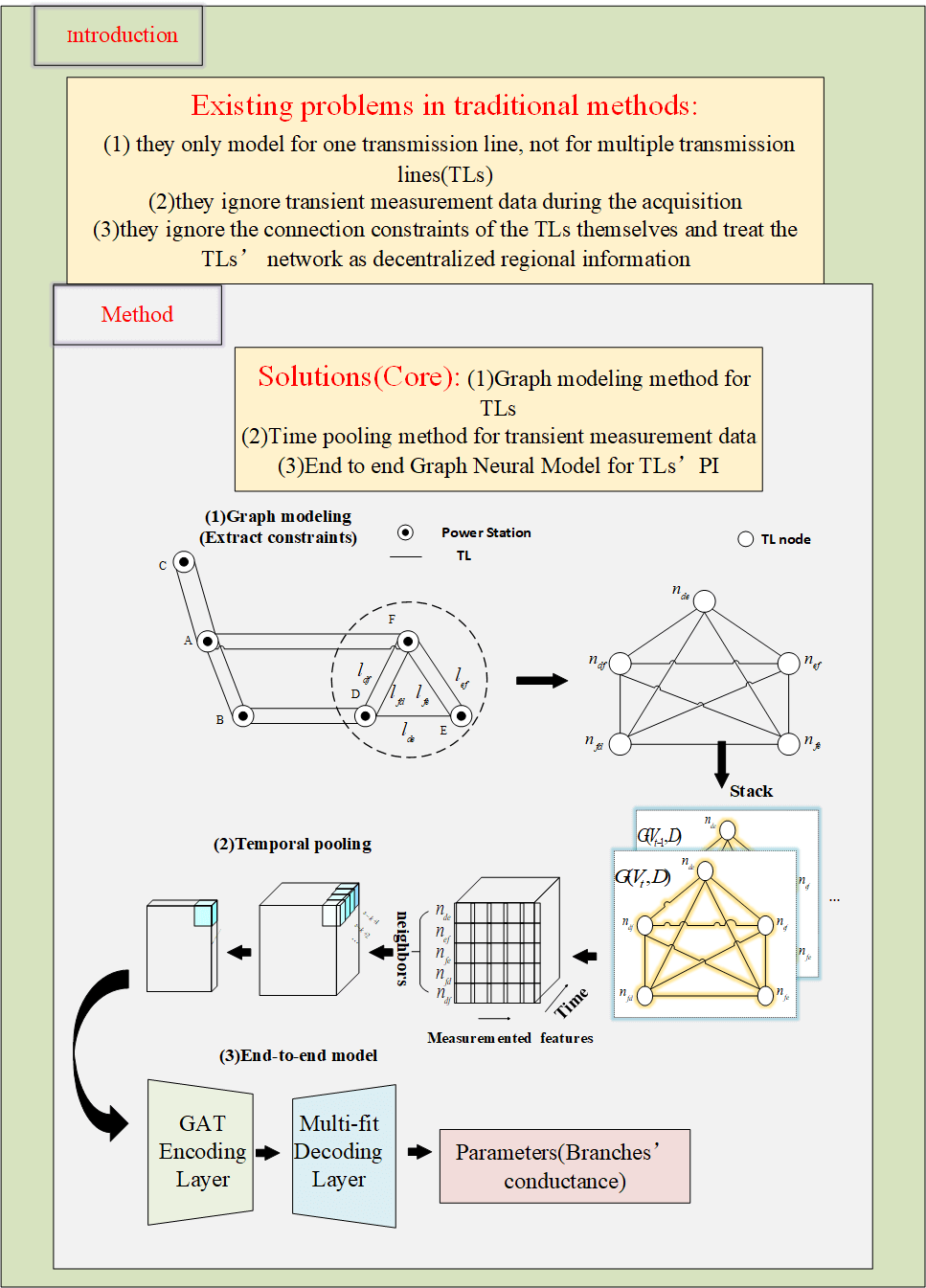 Open Access
Open Access
ARTICLE
STPGTN–A Multi-Branch Parameters Identification Method Considering Spatial Constraints and Transient Measurement Data
Jiangsu Key Laboratory of Big Data Analysis Technology, Nanjing University of Information Science and Technology, Nanjing, 210044, China
* Corresponding Author: Liguo Weng. Email:
(This article belongs to the Special Issue: Machine Learning-Guided Intelligent Modeling with Its Industrial Applications)
Computer Modeling in Engineering & Sciences 2023, 136(3), 2635-2654. https://doi.org/10.32604/cmes.2023.025405
Received 09 July 2022; Accepted 15 November 2022; Issue published 09 March 2023
Abstract
Transmission line (TL) Parameter Identification (PI) method plays an essential role in the transmission system. The existing PI methods usually have two limitations: (1) These methods only model for single TL, and can not consider the topology connection of multiple branches for simultaneous identification. (2) Transient bad data is ignored by methods, and the random selection of terminal section data may cause the distortion of PI and have serious consequences. Therefore, a multi-task PI model considering multiple TLs’ spatial constraints and massive electrical section data is proposed in this paper. The Graph Attention Network module is used to draw a single TL into a node and calculate its influence coefficient in the transmission network. Multi-Task strategy of Hard Parameter Sharing is used to identify the conductance of multiple branches simultaneously. Experiments show that the method has good accuracy and robustness. Due to the consideration of spatial constraints, the method can also obtain more accurate conductance values under different training and testing conditions.Graphic Abstract

Keywords
Cite This Article
 Copyright © 2023 The Author(s). Published by Tech Science Press.
Copyright © 2023 The Author(s). Published by Tech Science Press.This work is licensed under a Creative Commons Attribution 4.0 International License , which permits unrestricted use, distribution, and reproduction in any medium, provided the original work is properly cited.


 Submit a Paper
Submit a Paper Propose a Special lssue
Propose a Special lssue View Full Text
View Full Text Download PDF
Download PDF Downloads
Downloads
 Citation Tools
Citation Tools